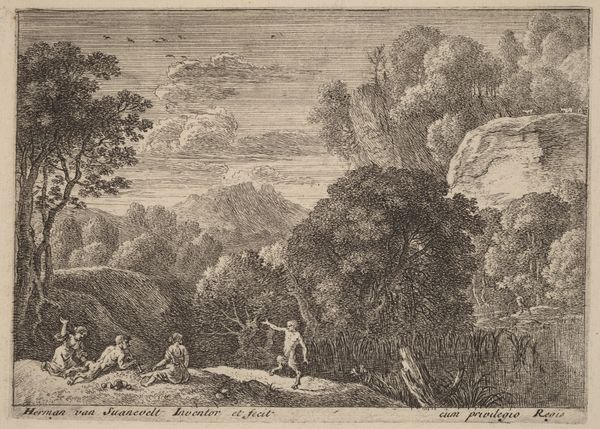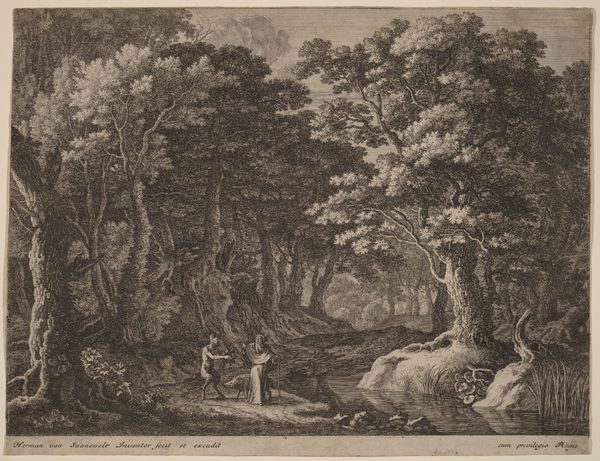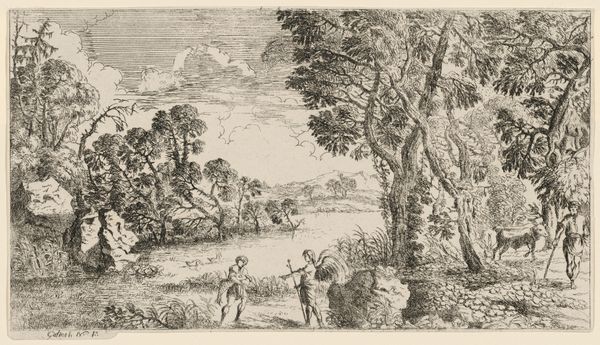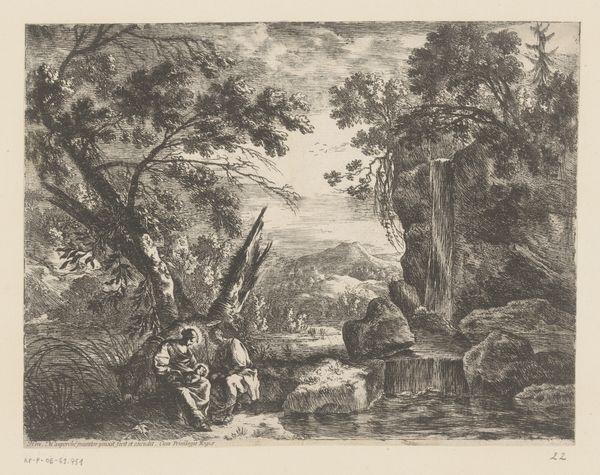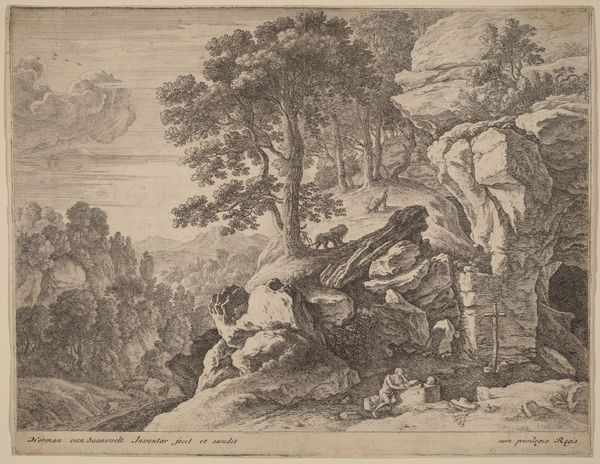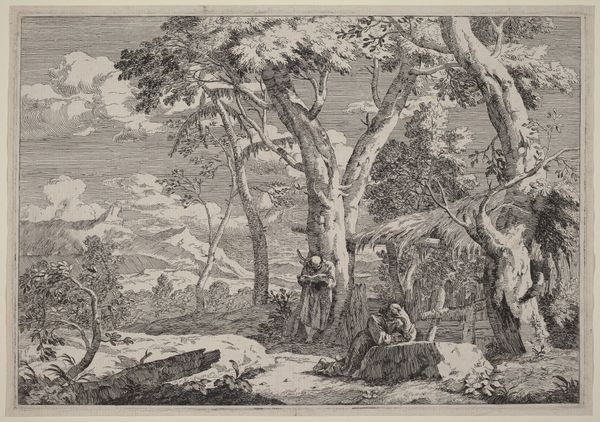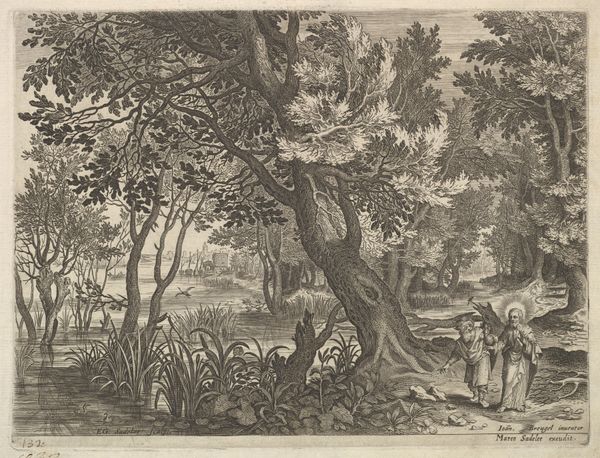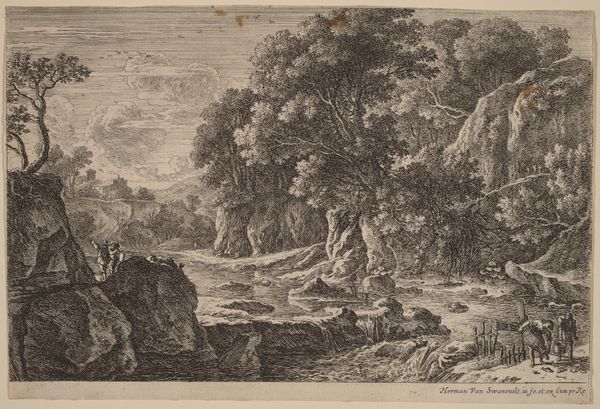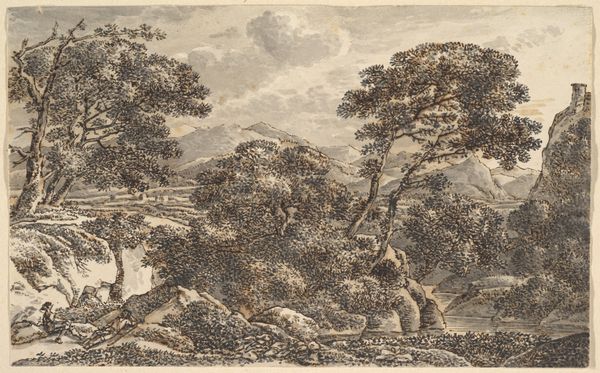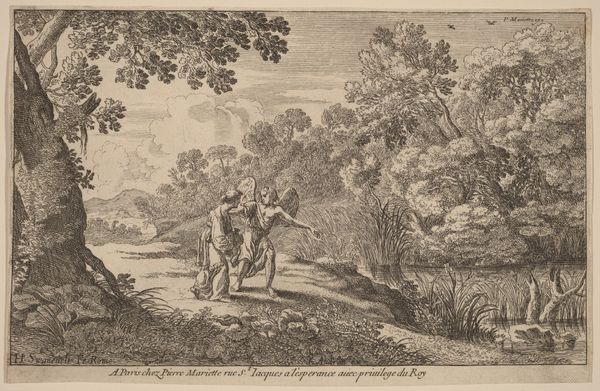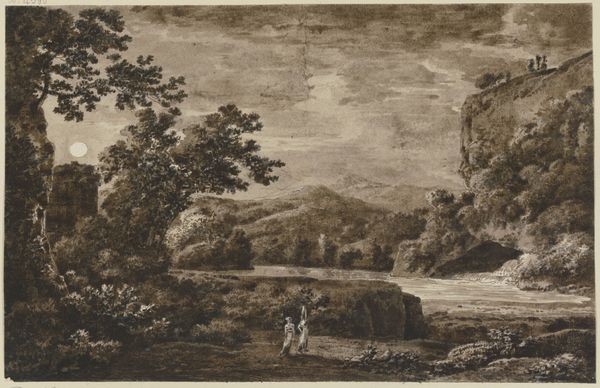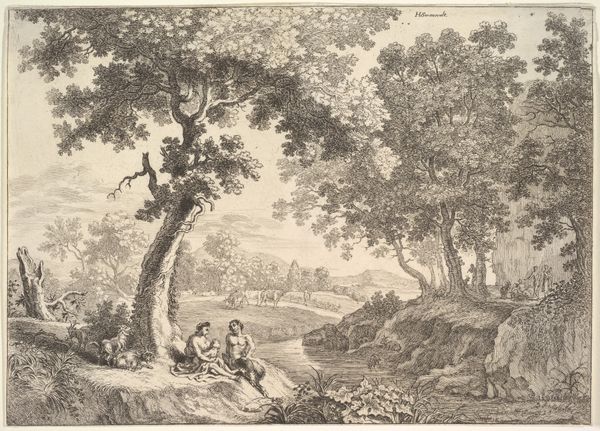
print, etching
#
narrative-art
#
baroque
# print
#
etching
#
landscape
#
figuration
#
line
#
history-painting
Dimensions: plate: 24.8 x 35 cm (9 3/4 x 13 3/4 in.) sheet: 25 x 35.2 cm (9 13/16 x 13 7/8 in.)
Copyright: National Gallery of Art: CC0 1.0
Curator: Immediately, I'm struck by this sense of… longing. It feels vast and lonely, despite being a landscape filled with trees. Editor: You're drawn to the emotional timbre. Formally, we can examine Marco Ricci's "Two Men Penitent in the Wilderness," etched in 1730. Its power lies in the line work and the articulation of space. Curator: Absolutely, it’s all about that etched line! There’s something deeply romantic about the rugged trees and almost theatrically placed figures, lost in what appears to be an existential drama. What is their story? Editor: Perhaps that's the point; it invites endless readings. The Baroque landscape serves as a stage for exploring repentance, evoking familiar stories but locating them within the human condition. Look at the density of the etching versus open space – note its conscious asymmetry! Curator: That interplay creates such movement! And yes, while ‘penitence’ may feel old fashioned, seeing figures alone amidst all that nature feels eternally relevant, as does our struggle with guilt, I guess! They make me feel that my sins, like theirs, would become wonderfully and artfully part of the scenery. Editor: Quite a forgiving landscape! The sinuous lines do echo, both physically and metaphorically, a journey through wilderness. This print beautifully embodies the way landscapes act as both witness to, and stage for human narrative. The way it's executed is impressive in its suggestion of deep emotional interiority, something almost unheard of until the rise of romanticism. Curator: I wonder if it really succeeds though - It all feels so beautifully crafted... So scenic. In fact, the emotion itself can easily feel less real when it comes swathed in so much drama. That line between something being a 'mood' or being actually expressive feels a bit thin for me in this one. What do you think? Editor: Well, I see it more as a deliberate theatricalization of the inner self—Ricci transforms feeling into performative spectacle through landscape. We get an exploration of sin acted out as grand spectacle in front of a viewing, judgmental nature, with the role of ‘nature’ played by dramatic trees. Curator: Exactly. But as you've said, we are the viewers, too. Maybe that artifice is simply showing our role as voyeurs who relish watching and contemplating drama at a comfortable distance. Editor: An interesting thought, reframing viewers as a safe jury. Well, either way, that closes out our time today on "Two Men Penitent." Thanks for your ideas. Curator: It has been enlightening to walk through this etching, its lines twisting, our stories too. Thanks for joining me on this penitential wander.
Comments
No comments
Be the first to comment and join the conversation on the ultimate creative platform.
